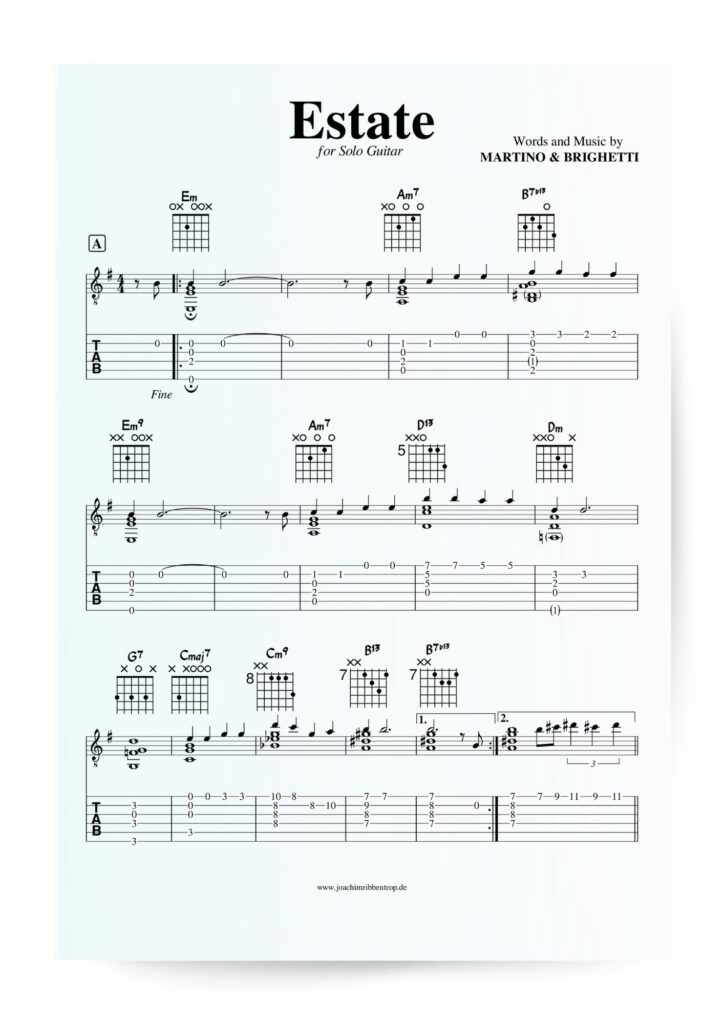Bruno Martino was an Italian pianist and singer whose bossa nova song Estate is one of the most well-known pieces of the genre. The ballad-like tempo and the long-sounding chords are ideal for getting started with Bossa Nova solo guitar playing.
This arrangement is initially conceived as a rubato piece, i.e. without a steady rhythmic pulse. This allows the focus to be placed on right hand technique and learning the increasingly complex chords.
The Arrangement For Solo Guitar
This version of Estate is in the key of E minor.
The song begins on the tonic chord and a continues with a simple IVm7-V7 cadence (Am7-B7). In bar 7 & 8 the chords seem to gravitate towards the parallel G-major chord via the cadence Am7-D13.
In bar 9, however, one is surprisingly greeted by a D minor chord. This in turn is part of the II-V-I cadence to the tonic parallel (Dm-G7-CMaj7).
So far, Martino uses traditional compositional tricks and achieves a good harmonic flow through cleverly used cadences (IV-V or II-V) and secondary dominants (G7).
At this point (bar 12) the first part is at its dramatic and melodic climax and Martino reaches a little deeper into his bag of tricks. The change from major to minor (C-Maj7 to C-Minor9) is at first sight a surprising change in chord quality. In view of the previously indicated evasion to G major, the C minor chord can be interpreted as a minor subdominant of the key of G major. The listening impression confirms this thought.

Right at the climax of the piece, Martino uses a beautiful harmonic concept to support the melody. His return to the tonic via the dominant seventh chord with inner voice leading (optional tone 13 to b13 or G# to G) also testifies to his keen sense of compositional details.
In the second part of the song, the chords get increasingly compley before returning to the re-statement of the main melody. Nevertheless, this arrangement is intended for beginning to intermediate Bossa Nova guitar players.